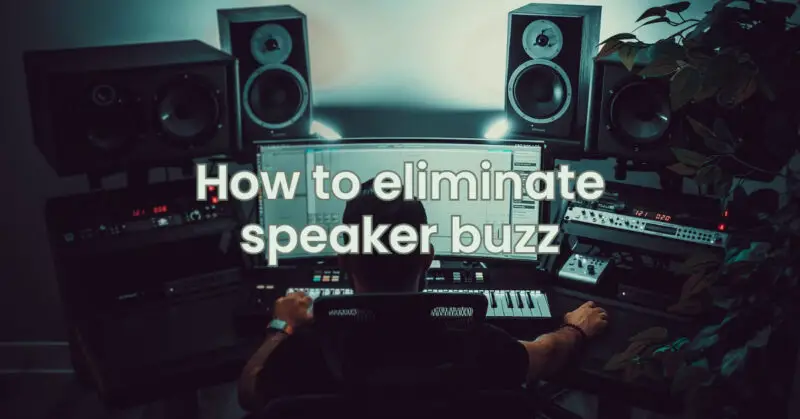Picture this: you’re enjoying your favorite music, a thrilling movie, or a crucial video conference, and suddenly, an unwelcome buzzing sound infiltrates the audio landscape. Speaker buzz is a common nuisance that can disrupt your audio experience. Fortunately, there’s hope. In this article, we’ll delve into the world of technology and acoustics, providing you with a comprehensive guide on how to eliminate speaker buzz. Whether you’re dealing with electronic interference, grounding issues, or other culprits, we’ll equip you with the knowledge and solutions needed to restore your audio to its pristine clarity.
Understanding the Buzz
Before we jump into solutions, it’s crucial to understand why speaker buzz occurs. Electronic interference, ground loops, and poor shielding are some of the primary contributors to this annoyance. Electronic devices emit electromagnetic signals, which can interfere with audio equipment and create buzzing sounds. Ground loops occur when there’s a difference in electrical potential between connected devices. Finally, poor shielding can lead to signals from one component affecting nearby components, resulting in unwanted noise.
Step-by-Step Guide to Eliminating Speaker Buzz
- Check Connections: Ensure all cables and connections are secure. Loose or damaged connections can introduce interference.
- Quality Cables: Invest in high-quality shielded cables. These cables are designed to minimize electromagnetic interference.
- Cable Management: Neatly organize and separate cables to prevent signal crossover and minimize interference.
- Ferrite Beads: Attach ferrite beads to cables. These small devices can absorb high-frequency noise and reduce interference.
- Grounding: Verify that all devices are properly grounded. Address grounding issues to eliminate potential sources of interference.
- Isolation Pads: Place your speakers on isolation pads or stands to minimize vibrations that could lead to buzzing.
- Power Conditioning: Use power conditioning devices to stabilize electrical supply and reduce noise introduced through power fluctuations.
- Update Drivers and Software: Ensure all audio drivers and software are up to date. Compatibility issues can lead to interference.
- Ground Loop Isolators: If ground loops are causing the buzz, consider using ground loop isolators to break the unwanted pathways.
- EMI Shielding: Employ EMI shielding materials to protect sensitive components from electromagnetic interference.
- Optimal Placement: Position your speakers away from potential sources of interference, such as electronic devices and power cables.
- Audio Equipment Separation: Keep audio equipment and computer components separate to minimize the risk of interference.
Conclusion
The journey to eliminate speaker buzz encompasses a thorough understanding of the underlying causes and a proactive approach to resolving them. By following this comprehensive guide, you’re equipped to tackle electronic interference, grounding issues, and other culprits head-on. Whether you’re an audiophile seeking sonic perfection or an individual looking for uninterrupted audio experiences, the solutions outlined in this guide can help you banish the buzz and restore the true essence of your audio content. Embrace the world of clear, vibrant sound without the annoyance of unwanted interference – it’s time to let your speakers sing harmoniously once more.


